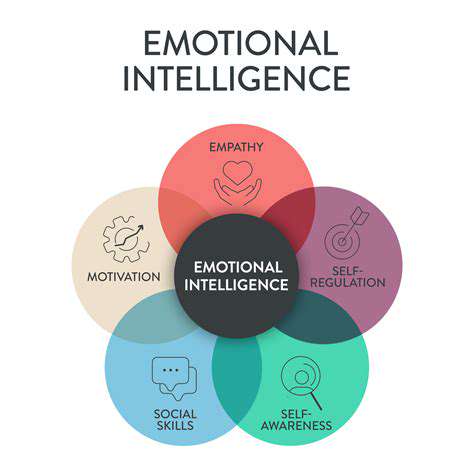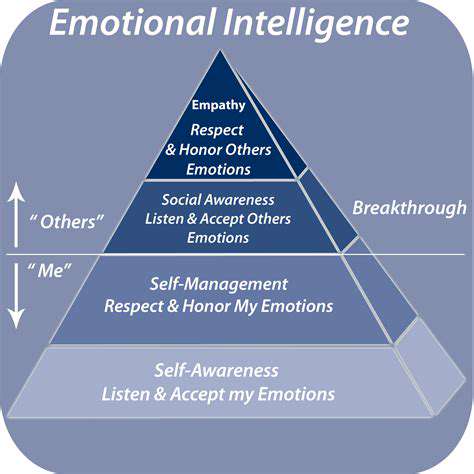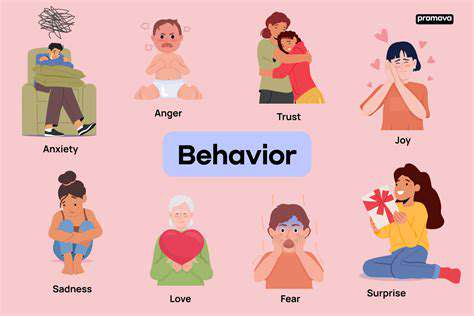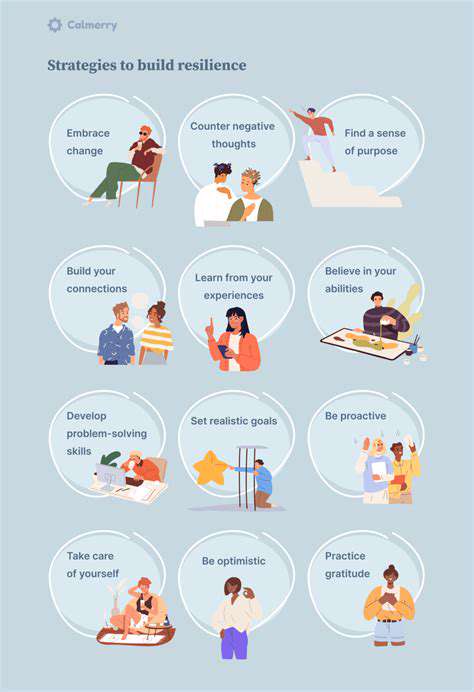How to Foster Empathy in Children at Home
Creating a Supportive Environment for Emotional Growth
Understanding the Importance of Emotional Safety
Creating a supportive environment for emotional growth hinges on establishing a space where children feel safe to express their emotions, both positive and negative. This emotional safety is paramount. When children feel secure in expressing their feelings without fear of judgment or punishment, they are more likely to explore and understand the full spectrum of human emotions. This fosters a deeper understanding of themselves and others, laying the groundwork for empathy development. A child who feels emotionally safe is more open to learning and growing.
Building this safety involves consistent positive reinforcement and clear communication. Children need to know that their feelings are valid and that they are supported in navigating them. This doesn't mean condoning harmful behaviors, but rather offering guidance and compassion in addressing emotional challenges.
Active Listening and Validation
Active listening is a cornerstone of emotional support. It involves truly hearing and understanding what a child is communicating, both verbally and nonverbally. This goes beyond simply waiting for your turn to speak; it requires focused attention and a genuine effort to comprehend their perspective. Crucially, validation involves acknowledging the child's feelings, even if you don't necessarily agree with their actions or viewpoints. For example, instead of dismissing a child's anger as silly, you might say, I understand you're feeling very frustrated right now. It sounds like this situation is really upsetting you. This validation helps them feel understood and accepted, fostering a sense of emotional security.
Encouraging Emotional Expression
Children often need guidance in identifying and expressing their emotions. Providing opportunities for them to talk about their feelings, whether through journaling, art, or simply conversation, can be incredibly beneficial. This process allows them to develop a vocabulary for their emotions, helping them to articulate their needs and experiences more effectively. Encouraging open communication about feelings, both positive and negative, is crucial to fostering emotional intelligence and empathy.
Modeling Emotional Intelligence
Children learn by observing and mimicking the behavior of adults in their lives. Demonstrating emotional intelligence, such as acknowledging and managing your own emotions, is a powerful example for children. Show them how to express their feelings constructively, how to apologize when they've hurt someone, and how to cope with difficult situations calmly and rationally. By demonstrating empathy and emotional regulation, you're providing a tangible model for them to emulate, significantly impacting their own emotional growth.
Promoting Perspective-Taking Activities
Activities that encourage perspective-taking are essential for fostering empathy in children. These activities can involve role-playing scenarios, reading stories that highlight different viewpoints, or discussing historical events or social issues. By actively engaging in these exercises, children learn to step into the shoes of others and understand their experiences, motivations, and feelings. Encouraging them to consider different perspectives helps them move beyond their own limited viewpoints and develop a broader understanding of the world around them.
Providing Opportunities for Prosocial Behavior
Fostering opportunities for prosocial behavior, such as sharing, helping others, and showing compassion, is critical. These actions not only build positive social skills but also strengthen their understanding of the impact their actions have on others. By actively encouraging and rewarding these behaviors, you're directly fostering a sense of empathy and concern for the well-being of others. This creates a nurturing environment where children learn to value and care about those around them, strengthening their capacity for empathy.
Modeling Empathy Through Your Actions
Understanding the Importance of Empathy
Empathy is a crucial social-emotional skill that allows children to understand and share the feelings of others. It's not just about feeling sorry for someone; it's about truly grasping their perspective, recognizing their emotions, and responding with appropriate care and consideration. Developing empathy in children lays the foundation for strong relationships, compassion, and a sense of social responsibility, equipping them to navigate the complexities of social interactions and become contributing members of society.
Children who develop empathy are generally better equipped to handle conflict, resolve disagreements peacefully, and demonstrate kindness and understanding towards others. This skill is essential for fostering healthy relationships both at home and in school environments.
Active Listening and Validation
Active listening is a powerful tool for fostering empathy. When children feel heard and understood, they are more likely to understand and empathize with others. This involves paying close attention to what they are saying, both verbally and nonverbally, reflecting their feelings back to them, and validating their experiences. It's about creating a safe space where children feel comfortable expressing their emotions without judgment.
Validating their feelings, even if you don't necessarily agree with their perspective, shows that their emotions are important and deserve respect. Phrases like That sounds frustrating, or I can see why you're upset demonstrate empathy and encourage children to express themselves more openly.
Sharing Experiences and Perspectives
Sharing personal experiences and perspectives can help children understand that others have different viewpoints and feelings. This could involve discussing your own childhood experiences, or sharing stories of others who have faced similar situations. Through these shared experiences, children begin to see the world from different angles and develop a broader understanding of human emotions.
Talking about different cultures, religions, or backgrounds can also broaden children's understanding of the diversity of human experience. This will help them to recognize that not everyone has the same experiences or views, and to appreciate the richness of different perspectives.
Modeling Empathy in Daily Interactions
Children learn by observing the adults around them. Modeling empathy in your daily interactions with your child and others is crucial. Demonstrate empathy by actively listening to others, showing compassion when someone is struggling, and apologizing when you make a mistake. These actions create a powerful example for your child, demonstrating that empathy is a valued and important trait.
Children often mirror the behaviors they witness. When they see you demonstrating empathy, they are more likely to adopt this behavior themselves, internalizing it as an important part of their character.
Empathy Through Play and Imagination
Play and imagination offer fertile ground for developing empathy. Encourage imaginative play that involves taking on different roles and perspectives. Role-playing scenarios where characters experience various emotions can help children understand how others might feel in similar situations. Engaging in activities like building forts, creating stories, or playing with dolls or stuffed animals allows children to explore different emotions and perspectives in a safe and supportive environment.
Games and activities that encourage cooperation and collaboration, such as board games or group projects, also provide opportunities for children to experience different viewpoints and learn to consider the needs of others.
Using Books and Stories to Cultivate Empathy
Books and stories are powerful tools for cultivating empathy. Reading stories about characters who experience various emotions and challenges can help children understand and relate to the feelings of others. Choosing books that reflect diverse perspectives and experiences can help children develop a broader understanding of the human condition.
Discussing the characters' feelings and motivations after reading a story can deepen children's understanding and encourage them to reflect on their own experiences. This fosters a deeper level of empathy and compassion.
Engaging in Activities that Promote Perspective-Taking

Engaging in Creative Pursuits
Engaging in creative activities, such as painting, sculpting, writing, or playing music, can be incredibly beneficial for both mental and emotional well-being. These activities allow for self-expression and the exploration of new ideas, fostering a sense of accomplishment and satisfaction. Creative endeavors can also help reduce stress and anxiety by providing a healthy outlet for emotions and thoughts. The process of creating something new can be deeply meditative, offering a welcome respite from the demands of daily life.
Whether you're a seasoned artist or just starting to dabble in a new hobby, the act of creation itself is often a source of joy and fulfillment. Exploring different mediums and techniques can broaden your perspective and open doors to new possibilities. Furthermore, creative pursuits can enhance problem-solving skills and promote critical thinking. The process of bringing an idea to life often requires innovation and resourcefulness, ultimately strengthening these essential cognitive abilities.
Participating in Physical Activities
Physical activity is crucial for maintaining physical health and well-being, but it also plays a significant role in promoting mental wellness. Engaging in regular exercise, whether it's a brisk walk, a challenging workout, or simply playing a sport, can significantly reduce stress and improve mood. The release of endorphins during physical activity has a positive impact on both physical and mental health.
Physical activity provides a sense of accomplishment and boosts self-esteem. Regular exercise can contribute to better sleep quality, which is essential for overall health and well-being. Exercising regularly can improve sleep quality, leading to a more positive and productive lifestyle. Furthermore, physical activity fosters a sense of community and social connection, especially when participated in with others.
Finding an activity you genuinely enjoy is key to maintaining consistency. Whether it's team sports, individual pursuits, or simply taking a daily walk, consistent physical activity has a wide array of benefits for your body and mind. This can be a crucial part of achieving a well-rounded and fulfilling life.
Cultivating Meaningful Connections
Connecting with others is an essential aspect of a fulfilling life. Strong social connections provide emotional support, a sense of belonging, and opportunities for shared experiences. Spending time with loved ones, engaging in meaningful conversations, and participating in social activities can significantly reduce feelings of loneliness and isolation. Building strong interpersonal relationships can make a world of difference in one's overall well-being.
Volunteering or participating in community events are excellent ways to connect with others and make a positive impact. Helping others can foster a sense of purpose and fulfillment, while also providing opportunities to learn and grow. These connections create a supportive network that can be a source of strength and encouragement during challenging times.
Utilizing Storytelling and Emotional Literacy Tools
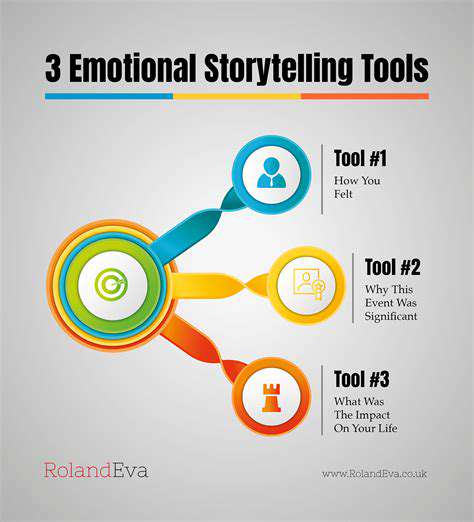
Harnessing the Power of Narrative
Storytelling is a powerful tool that can captivate audiences and leave a lasting impact. By weaving a narrative around your message, you can create an emotional connection with your readers, listeners, or viewers. This emotional connection fosters engagement and understanding, making your content more memorable and impactful. Using relatable characters and compelling plots can transform information into an experience.
Creating Emotional Resonance
Evoking specific emotions through storytelling is crucial for a deeper connection with the audience. Consider the emotions you want to evoke – joy, sorrow, anger, fear, or perhaps inspiration. By strategically incorporating these emotions within your narrative, you can create a more profound impact on the audience, making your message stick and prompting them to reflect on your story. This emotional engagement is vital for achieving your communication goals.
Building Empathy Through Characters
Developing relatable characters is essential for establishing empathy with your audience. These characters should embody the human experience and reflect the struggles and triumphs that resonate with your audience. By showcasing their journey, you create a shared experience that connects your message with the audience on a personal level. When readers can connect with the characters, they are more likely to absorb the core message of your narrative.
Using Sensory Details to Enhance Engagement
Sensory details such as sights, sounds, smells, tastes, and textures, when used effectively, can make your narrative truly come alive. These details can transport your audience to the scene of your story, enriching their experience and creating a more immersive connection. Imagine describing a bustling marketplace with vibrant colors, enticing aromas, and the rhythmic sounds of bartering. Such vivid descriptions can significantly deepen the emotional impact of your narrative.
The Importance of Authenticity and Truth
Authenticity is paramount in storytelling. Authenticity resonates with audiences on a deeper level and builds trust. Stories that feel genuine and truthful are more engaging and memorable. When your story reflects real-life experiences and struggles, audiences can relate and connect with the narrative on a much more profound level. This connection often leads to a higher level of engagement and impact.
Crafting a Compelling Narrative Arc
A well-structured narrative arc is essential for capturing and maintaining audience interest. A compelling arc typically involves a clear beginning, middle, and end. This structure provides a sense of progression and allows the audience to follow the characters' journey and experience the rising action, climax, and resolution. A strong narrative arc keeps your audience hooked from start to finish.
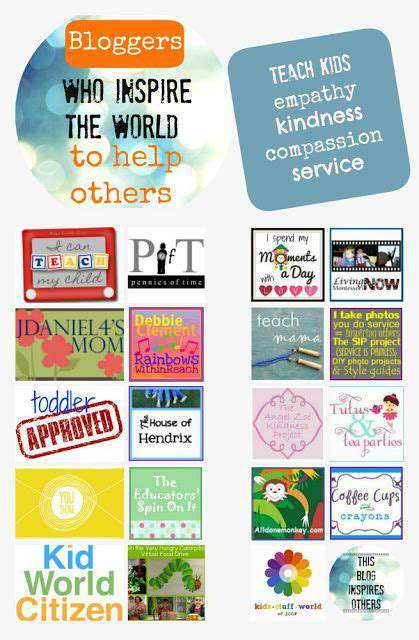
Read more about How to Foster Empathy in Children at Home
Hot Recommendations
- Efficient Study Habits for Middle Schoolers
- How to Foster Cooperation Between Co Parents
- Best Education Techniques for Children with Autism
- Supporting Special Needs Kids: Strategies for Education and Companionship
- How Can I Improve Early Childhood Learning at Home?
- How to Navigate Different Parenting Styles Together
- How to Create Consistency with Positive Discipline Techniques
- Step by Step Guide to Positive Behavior Management
- Tips for Encouraging Social Skills in Children with Autism
- How to Support Special Needs Children at Home

